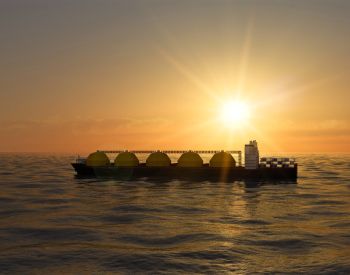Client
ENGIE E&P Norge, part of the ENGIE Group
Services
Energy exploration and production, Norwegian Continental Shelf
Result
A framework to reduce greenhouse gas emissions, increase cost-efficiency and enhance reputation
Client challenge
ENGIE E&P Norge is part of the ENGIE Group, providing efficient energy solutions in both the renewable energy and liquefied natural gas business. Our client is committed to green, sustainable operations, developing operations with a focus on responsible growth. To meet environmental requirements set by the Norwegian Environment Agency, the company knew two factors were critical:
- reducing emissions as much as possible, within reasonable costs
- developing and implementing an energy management system. This would enable continuous, systematic and objective evaluation of operations, achieving the best possible energy performance.
Our client asked us to create this bespoke system alongside their team. The system would be tested at their operations in the Gjøa field, with a view to applying it more widely at other facilities on the Norwegian Continental Shelf. The energy management system needed to be integrated with the existing management system and follow the principles and methods set by the standard for energy management, ISO 50001.
How we helped
We worked closely with our client, drawing on our strong cross-disciplinary expertise. To establish a solid foundation for systematic energy management, the solution was based on the well-established ‘Plan-Do-Check-Act’ approach. Our support included:
- developing an overview of the company’s current energy consumption
- setting the basis for future periodic reviews
- establishing energy management objectives, an energy management group and other key roles
- identifying opportunities for continual improvement
- preparing a manual, bringing together the different elements of the company’s energy management structure.
Insight
The project was broken down into three main phases.
Familiarisation
- Getting to know our client’s existing management system
- Understanding the organisation, including its culture, values and hierarchies
- Engaging management and creating awareness of the project
Planning
- Carrying out a gap analysis of existing business processes and ISO 50001 requirements
- Identifying and engaging stakeholders
- Establishing management scope and focus areas
- Performing an energy review, including collecting data and defining parameters
- Establishing energy related responsibilities and requirements
Building solutions
- Organising workshops, encompassing energy monitoring, ambitions and opportunities for improvement
- Documenting business rules, role descriptions, forms for energy reviews and an action plan
- Preparing an Energy Management Manual
- Identifying opportunities for continuous improvement
Powerful results
A systematic approach to energy management has placed ENGIE E&P Norge in a strong position to make further improvements to its environmental performance. Activities here are expected to:
- reduce greenhouse gas emissions
- increase cost-efficiency
- enhance the company’s reputation and market positioning.
This partnership and the results achieved highlight our shared commitment towards sustainable solutions and a greater energy efficiency.
Jannecke Moe, Environmental Management Leader, ENGIE E&P Norge
Related Services

